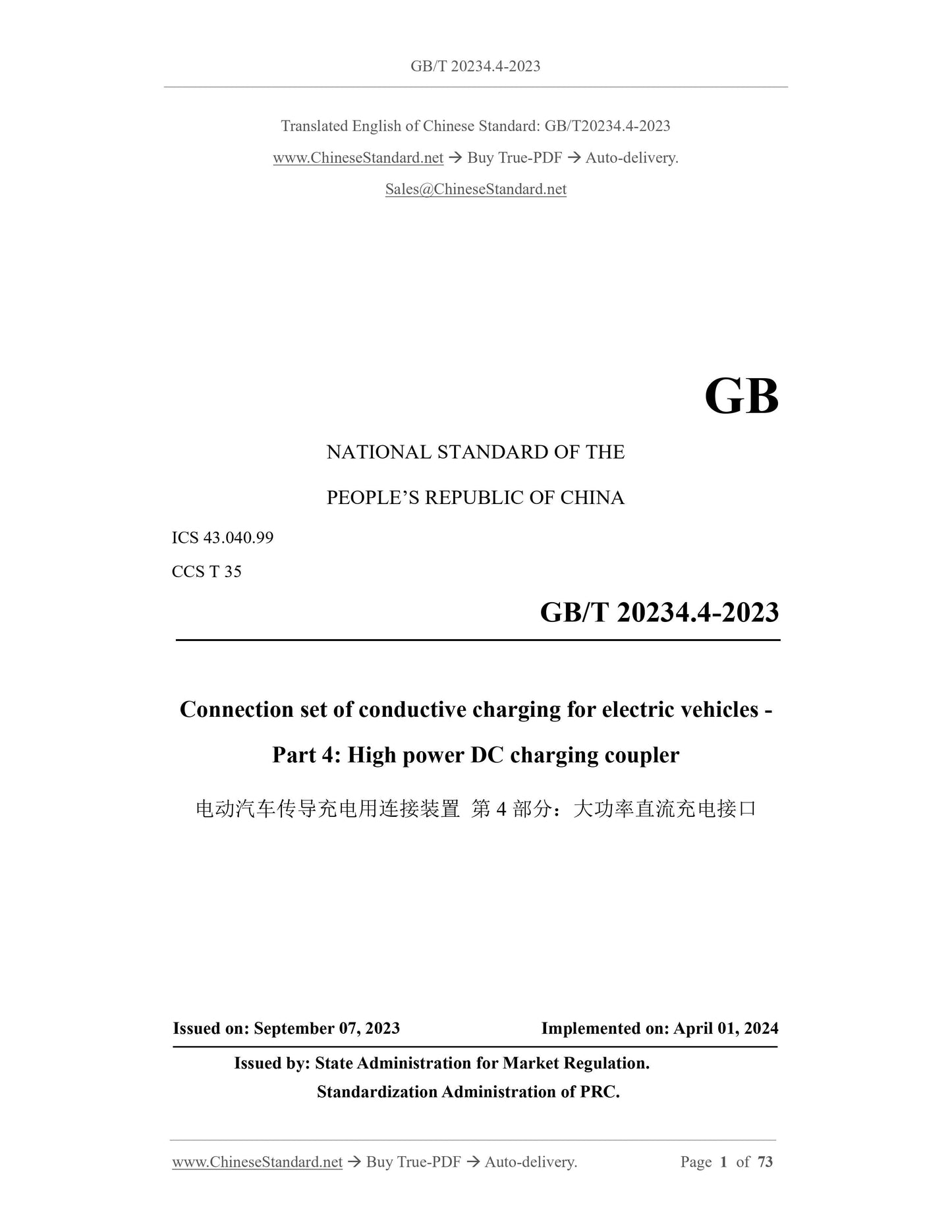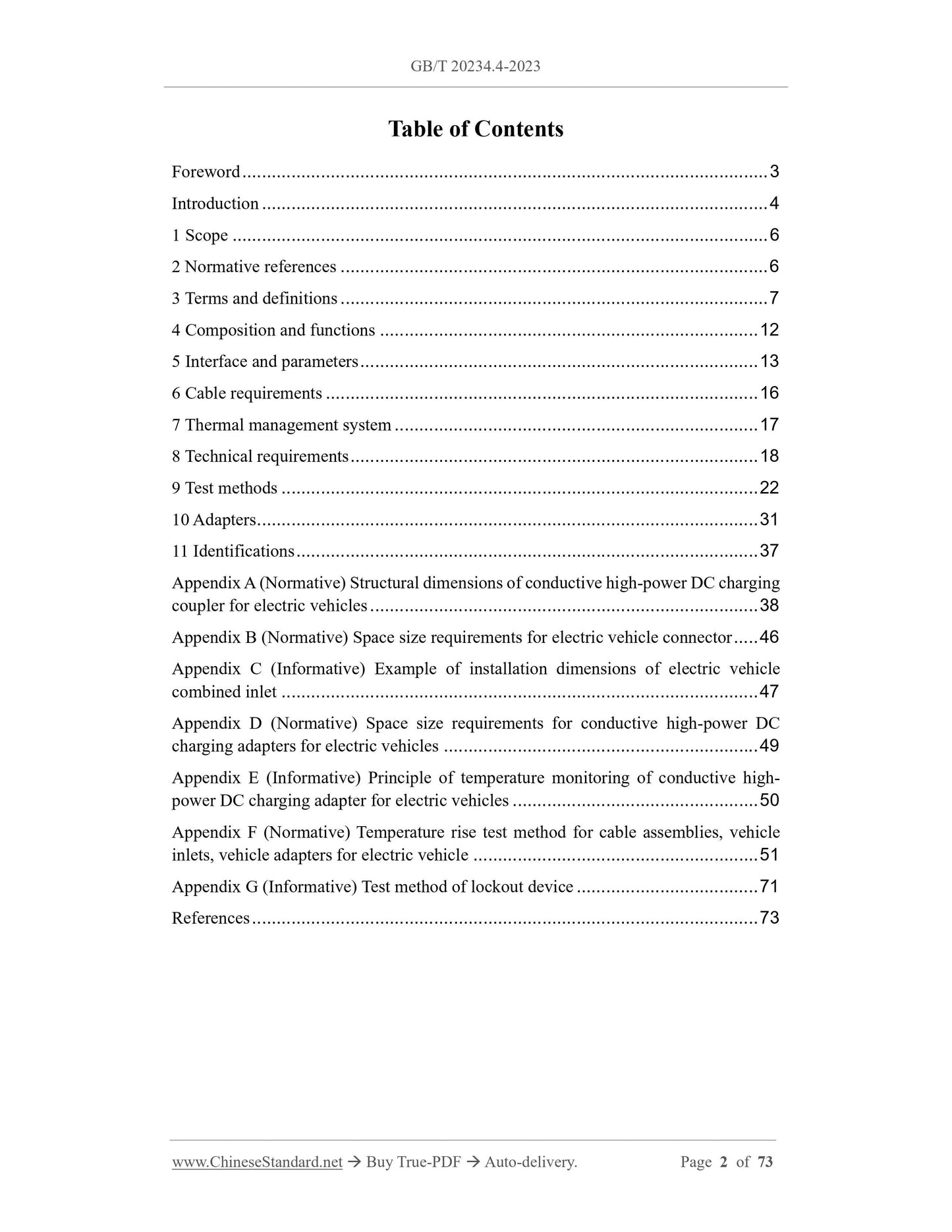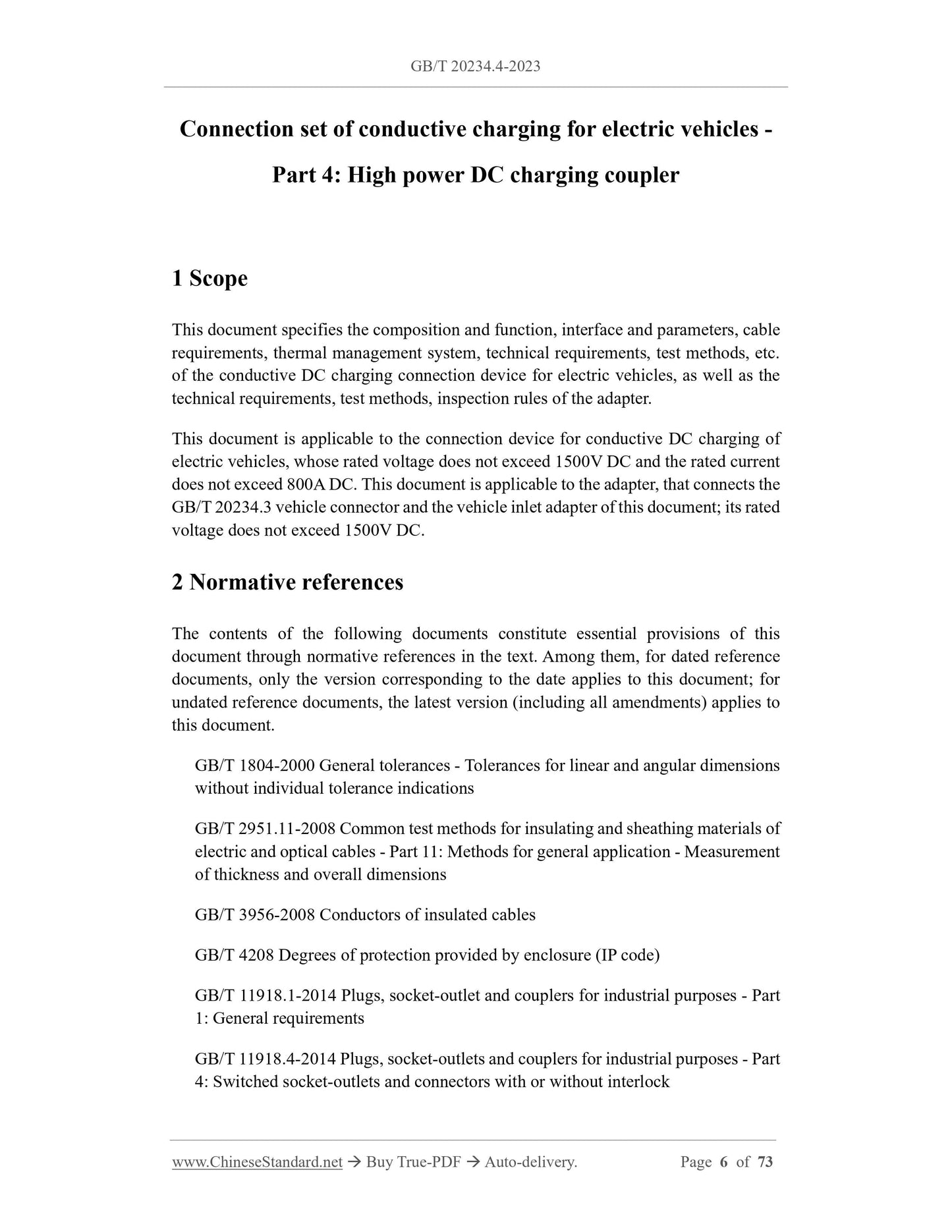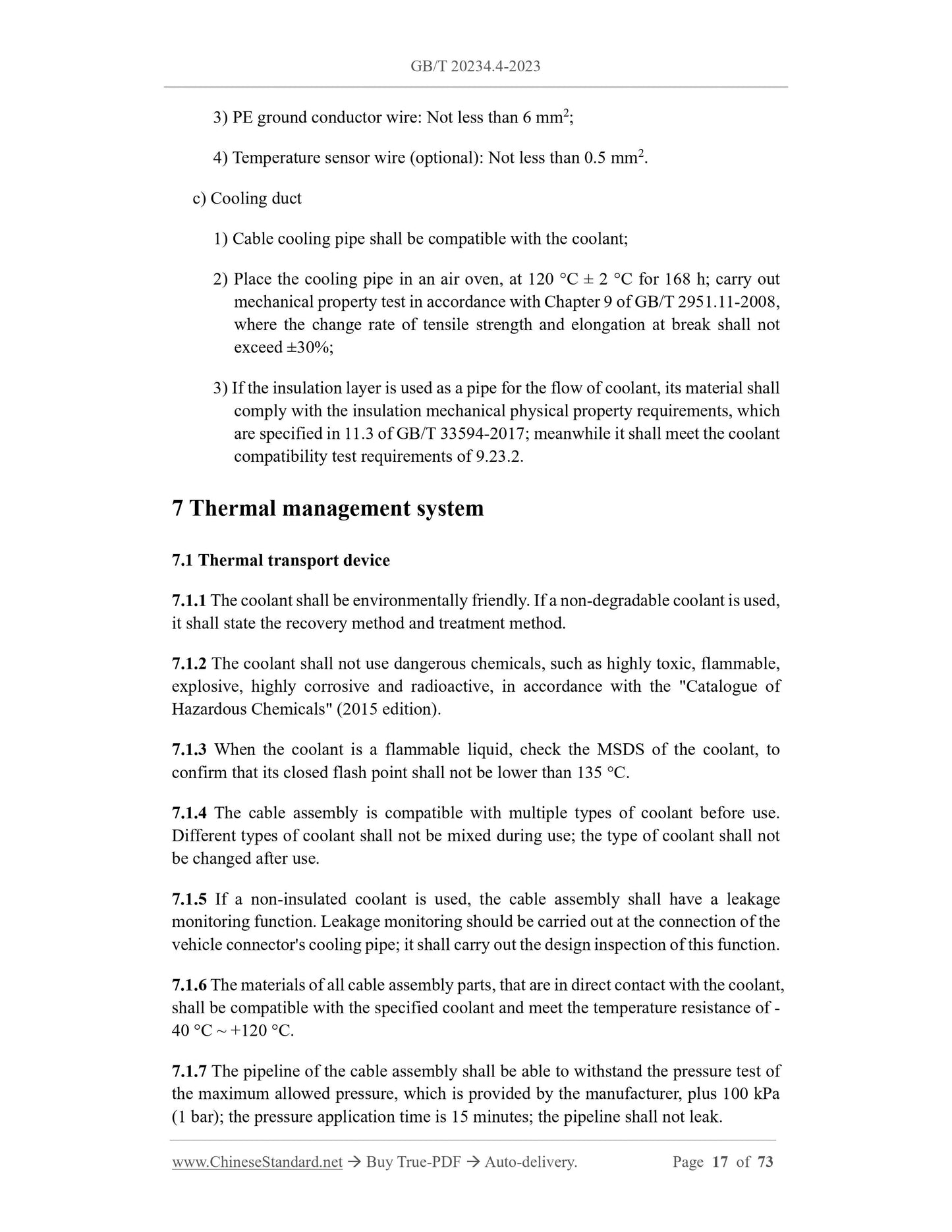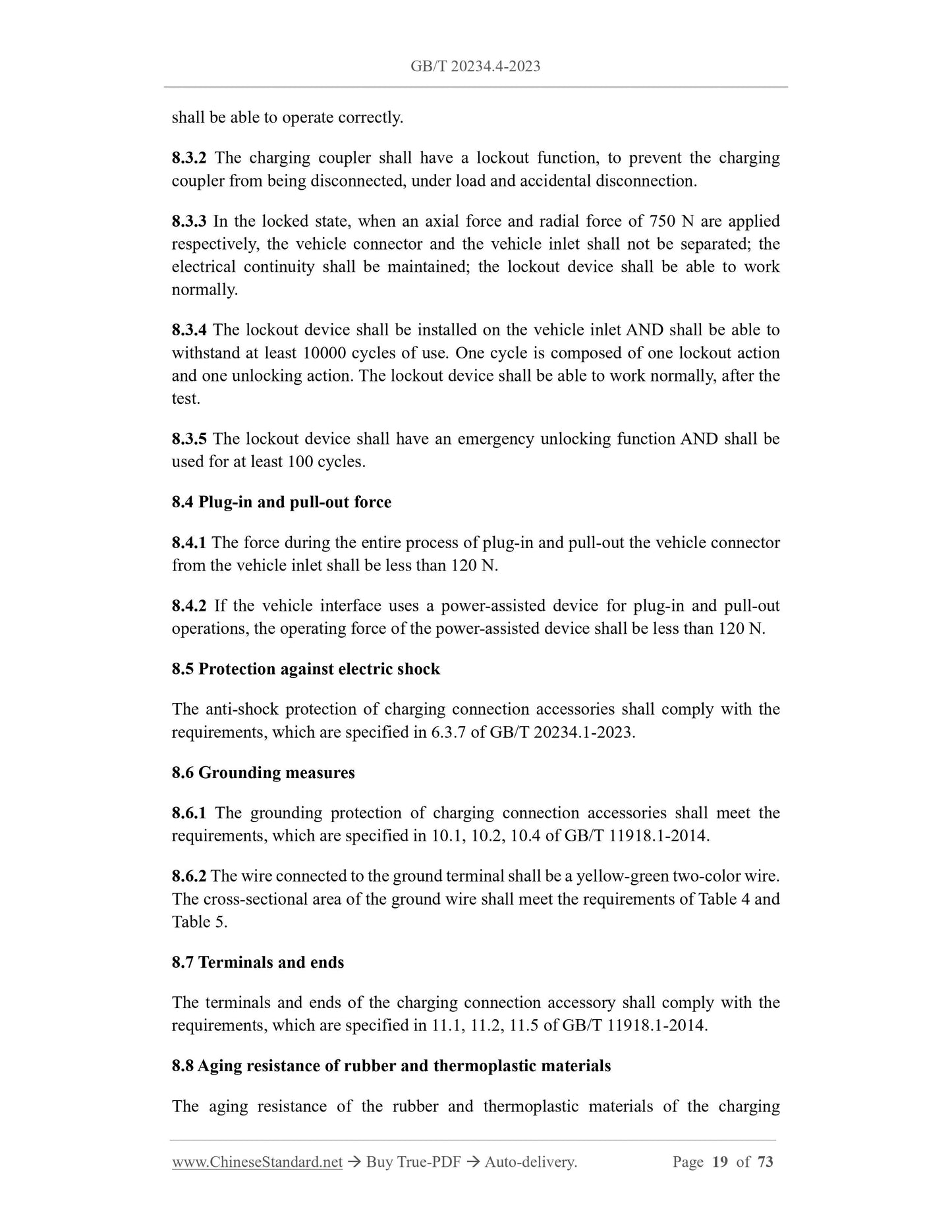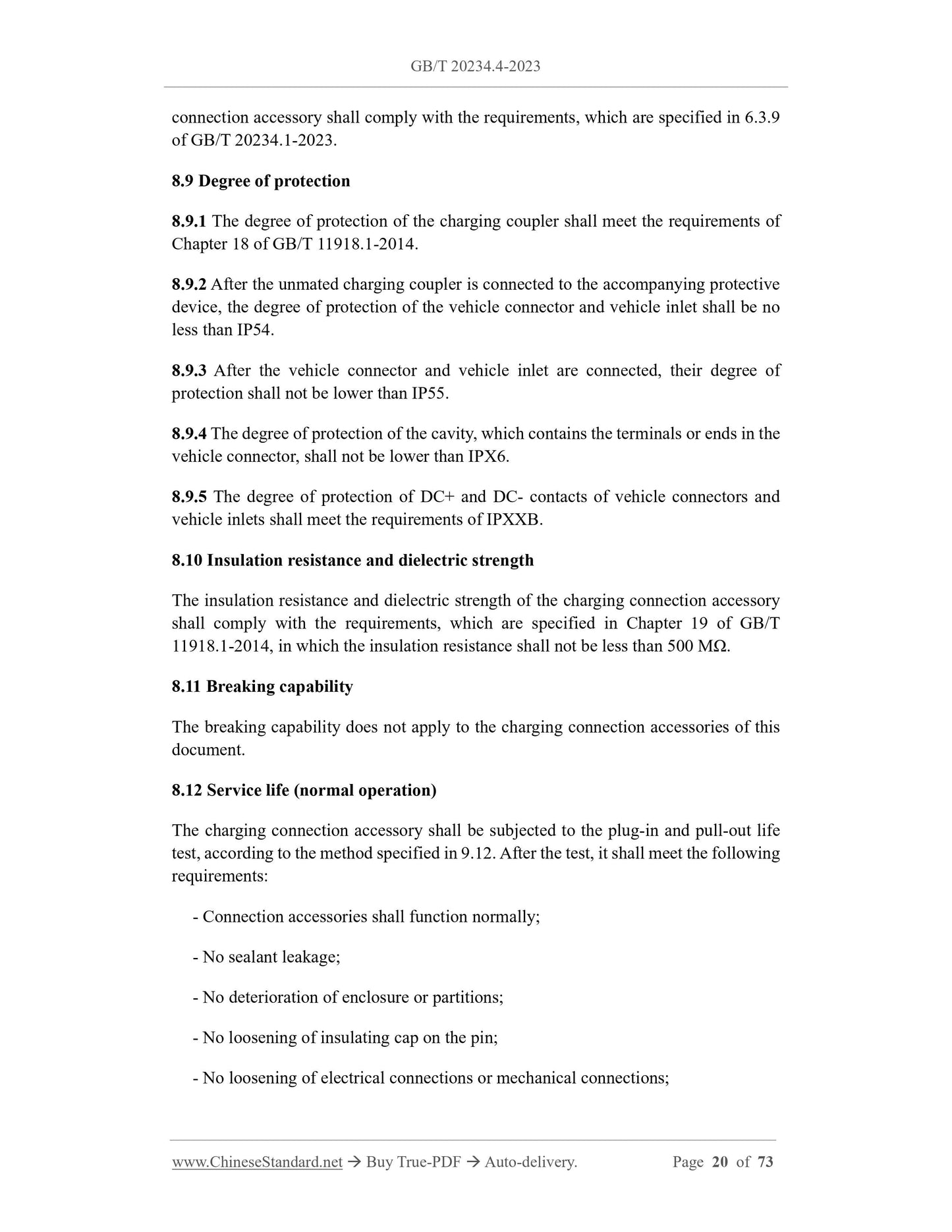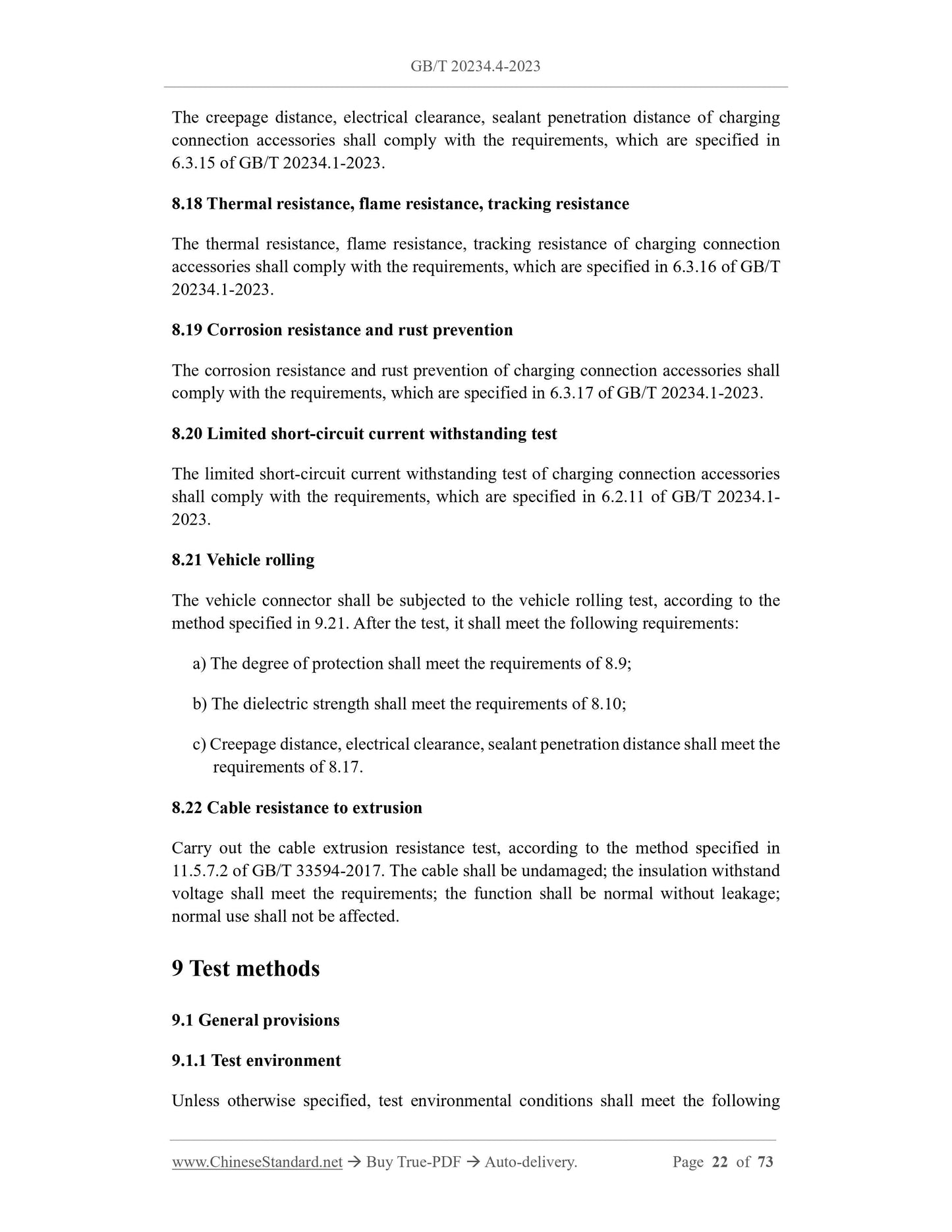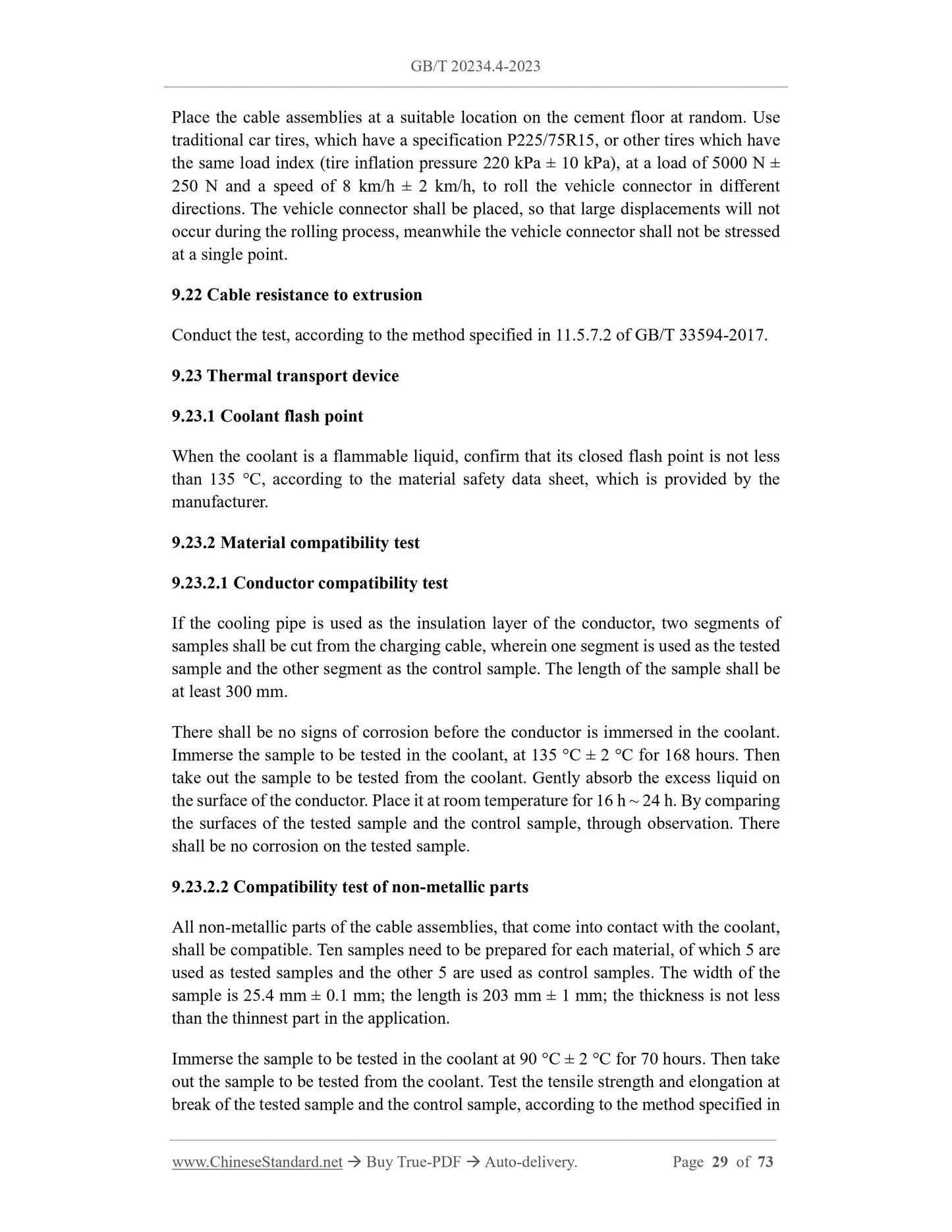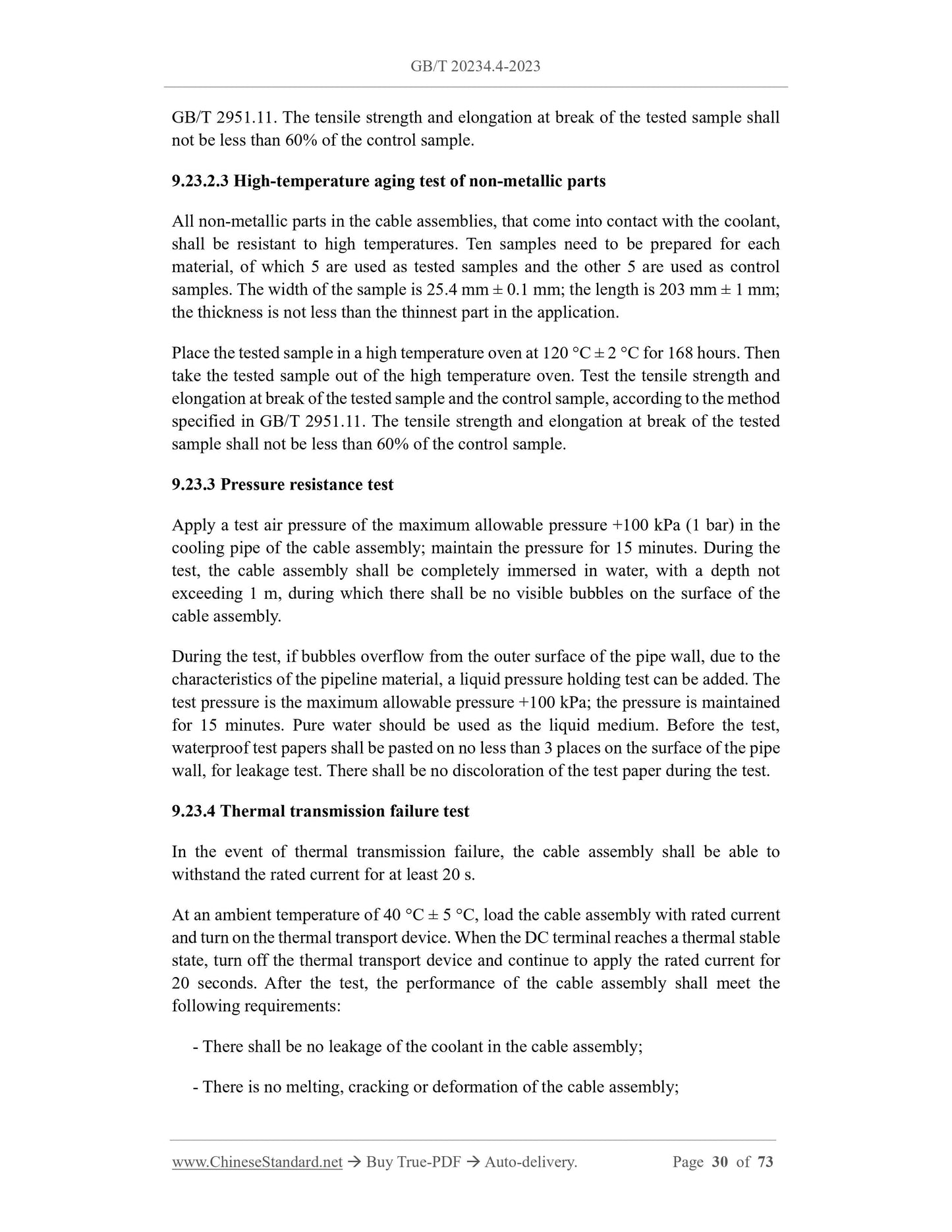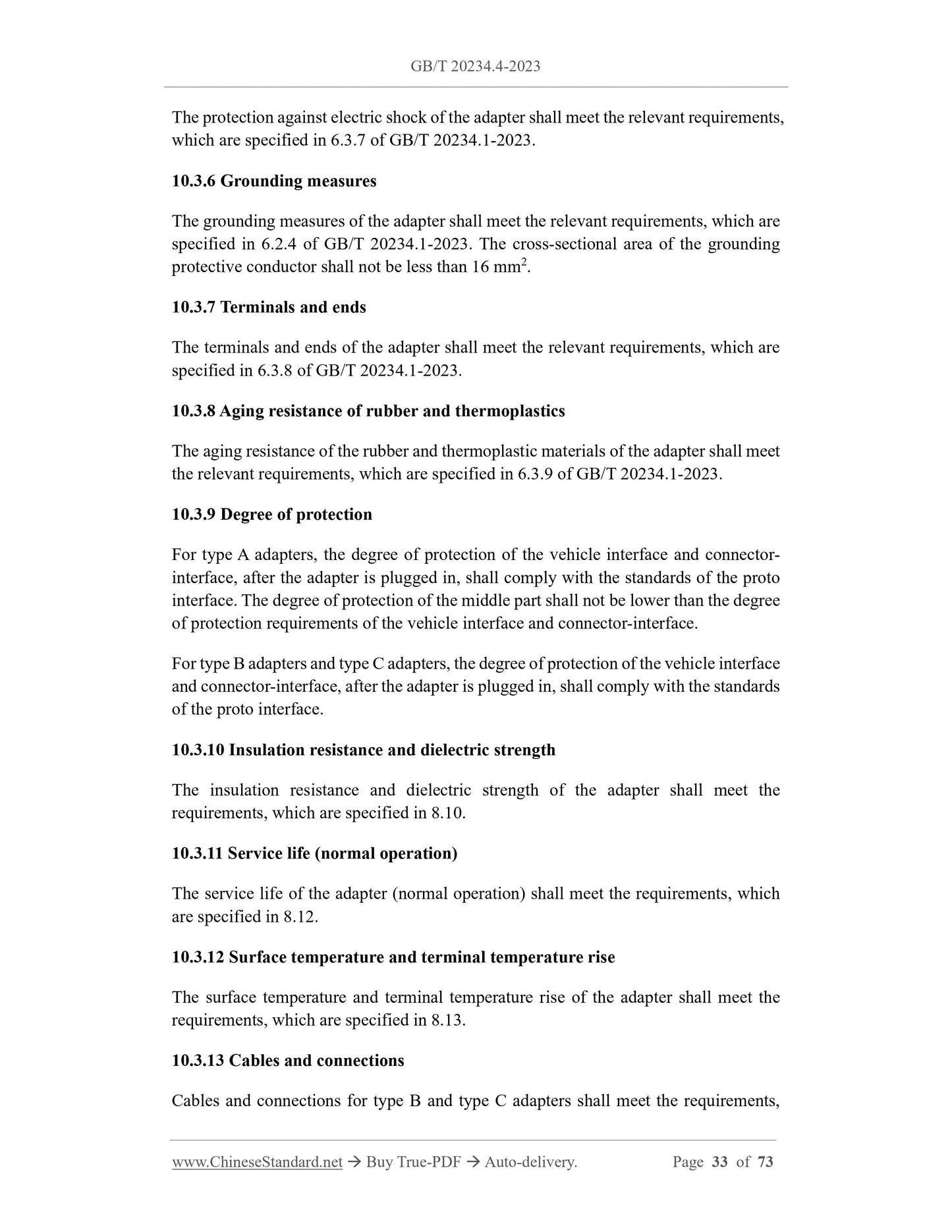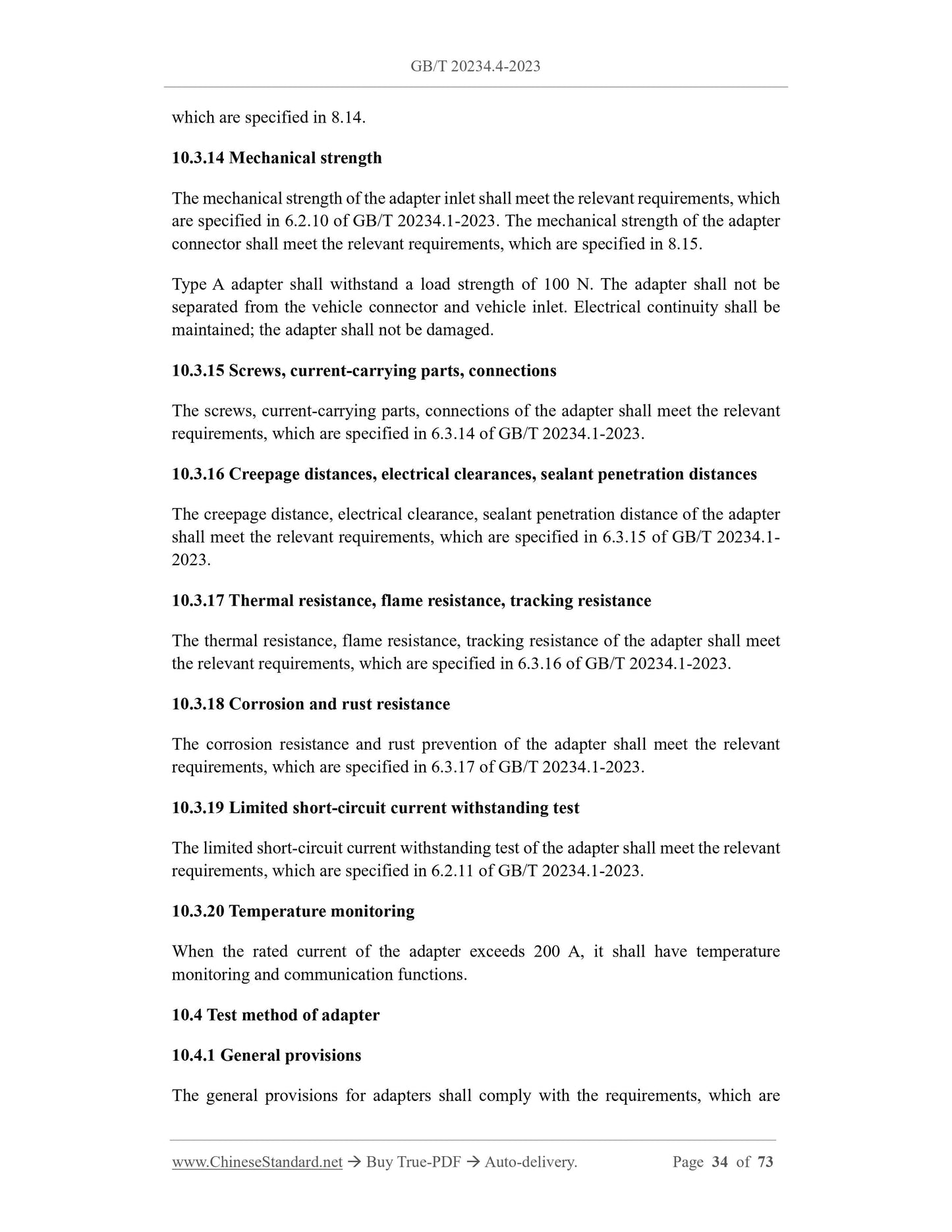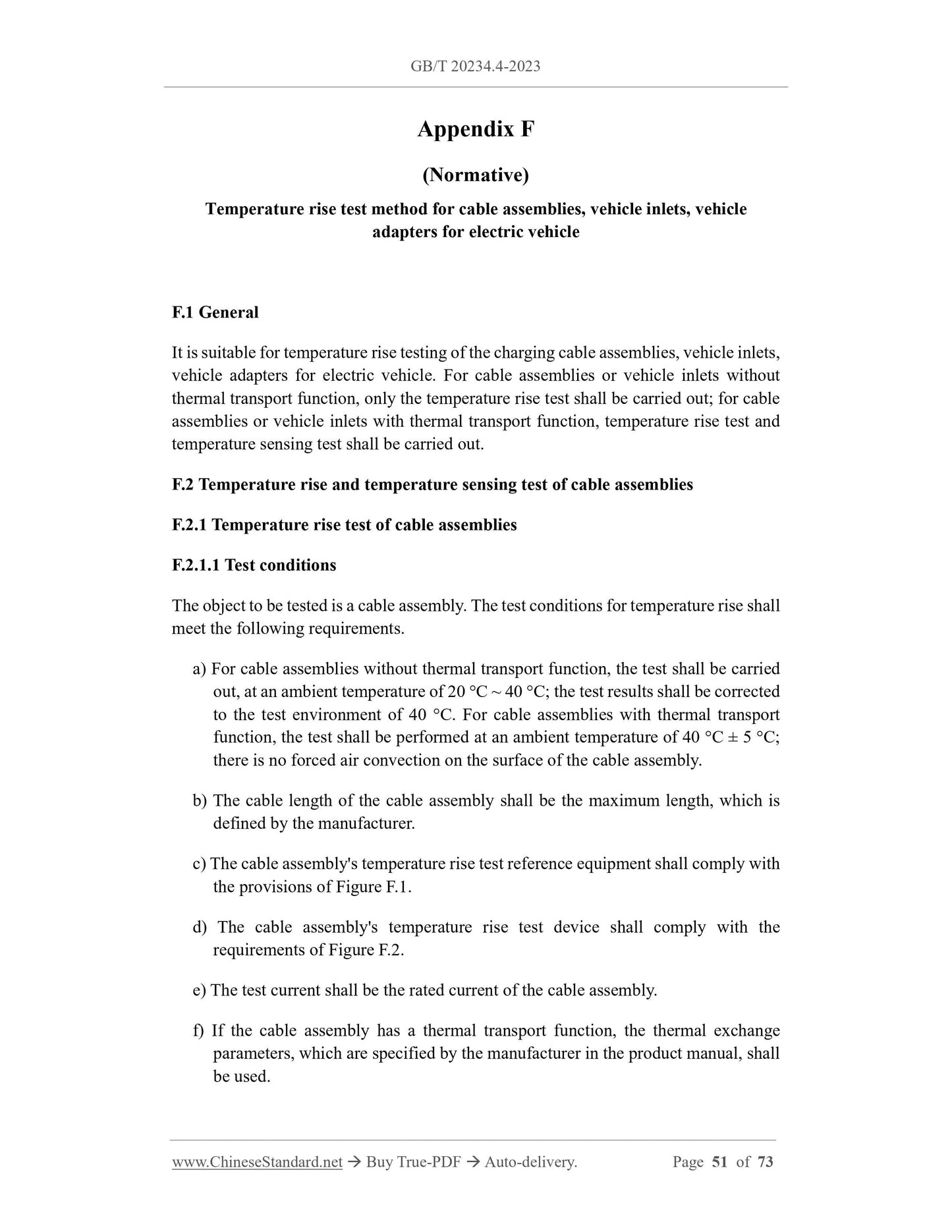1
/
of
12
www.ChineseStandard.us -- Field Test Asia Pte. Ltd.
GB/T 20234.4-2023 English PDF (GB/T20234.4-2023)
GB/T 20234.4-2023 English PDF (GB/T20234.4-2023)
Regular price
$705.00
Regular price
Sale price
$705.00
Unit price
/
per
Shipping calculated at checkout.
Couldn't load pickup availability
GB/T 20234.4-2023: Connection set for conductive charging of electric vehicles - Part 4: High power DC charging coupler
Delivery: 9 seconds. Download (and Email) true-PDF + Invoice.Get Quotation: Click GB/T 20234.4-2023 (Self-service in 1-minute)
Newer / historical versions: GB/T 20234.4-2023
Preview True-PDF
Scope
This document specifies the composition and function, interface and parameters, cablerequirements, thermal management system, technical requirements, test methods, etc.
of the conductive DC charging connection device for electric vehicles, as well as the
technical requirements, test methods, inspection rules of the adapter.
This document is applicable to the connection device for conductive DC charging of
electric vehicles, whose rated voltage does not exceed 1500V DC and the rated current
does not exceed 800A DC. This document is applicable to the adapter, that connects the
GB/T 20234.3 vehicle connector and the vehicle inlet adapter of this document; its rated
voltage does not exceed 1500V DC.
Basic Data
| Standard ID | GB/T 20234.4-2023 (GB/T20234.4-2023) |
| Description (Translated English) | Connection set for conductive charging of electric vehicles - Part 4: High power DC charging coupler |
| Sector / Industry | National Standard (Recommended) |
| Classification of Chinese Standard | T35 |
| Classification of International Standard | 43.040.99 |
| Word Count Estimation | 54,564 |
| Date of Issue | 2023-09-07 |
| Date of Implementation | 2024-04-01 |
| Issuing agency(ies) | State Administration for Market Regulation, China National Standardization Administration |
Share
